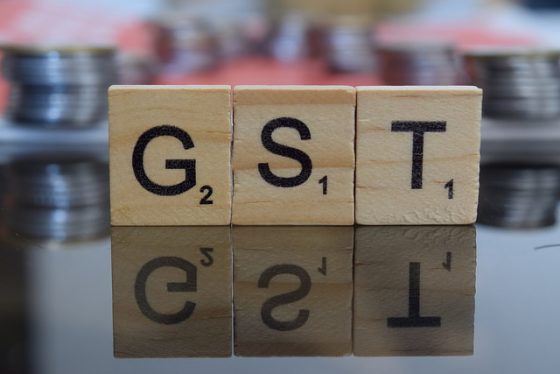Theme:
- The Goods and Services Tax (GST) was introduced in India on July 1, 2017. The implementation of the Goods and Services Tax (GST) in India has been a significant step towards simplifying the indirect tax structure in the country. Recently, the Central Board of Indirect Taxes and Customs (CBIC) issued new notifications to bring in changes to the GST rate structure, exemptions, and compensation cess. These changes were recommended in the 49th meeting of the GST Council, indicating the government’s commitment to ensuring a smooth and efficient GST system. However, despite these efforts, some challenges persist in the functioning of the GST system. Let’s examine the present situation, positive effects, challenges, and conclusion of GST@5 years.
Present Situation:
- In February 2023, the total gross GST revenue collected amounted to Rs. 1,49,577 crore, indicating a 12% increase from the GST revenue collected during the corresponding month of the previous year.
- GST collection in Jan 2023 crossed ₹1.5 lakh crore mark for the 3rd time this financial year, 2nd only to the highest collection in April 2022 of ₹1.68 lakh crore. The trend of growth in GST collection is consistent and sustainable.
- The indirect tax consists of 17% of the total revenue of the government, which is more than what the government receives from income tax, union excise duties, as well as corporation tax.
- The number of GST returns and the statement of invoices filed by the end of the month has seen a significant increase in recent years, with a total of 2.42 crore GST returns filed in the October-December 2022 quarter, compared to 2.19 crore in the same quarter of the previous year. This improvement in compliance is a result of various policy changes introduced throughout the year.
Positive effects:
- GST has simplified the indirect tax system by subsuming multiple taxes and cesses into a single tax structure.
- GST has empowered businesses by improving the ease of doing business in India, reducing the burden of multiple tax filings and compliance requirements, and making compliance easier and smoother.
- GST has brought positive effects such as plugging revenue leakages and addressing procedural issues.
- Tax evasion has been curbed due to the implementation of GST.
- Robust GST collections have been observed and monthly revenues have been more than Rs. 1.4 lakh crore for continuous 12 months.
- The use of data analytics and artificial intelligence has helped identify and track risky taxpayers and tax evasion cases.

Challenges:
- Implementing GST is still challenging due to issues with tax slabs, Input Tax Credits, and refunds. Having multiple tax slabs can confuse businesses, and claiming ITC and refunds can be complicated and time-consuming. To make it easier for businesses to comply, the processes need to be simplified and rationalized.
- Recent data reveals that 57,111 cases of GST offences have been registered between July 2017 and February 2023, with the highest number of cases registered in the fiscal year 2022-23. This suggests that certain businesses are facing challenges in adhering to the GST regulations, despite efforts to simplify the system. Therefore, it is imperative for the government to take measures to educate businesses about the GST system and simplify the compliance process.
- The GST Tribunals are responsible for adjudicating disputes between taxpayers and the tax authorities. However, the functioning of these Tribunals has been hampered due to delays in their setup, leading to a halt in tax recovery. This delay not only impacts businesses but also the government’s revenue collection. Therefore, the government needs to speed up the setup of these Tribunals to ensure the timely resolution of disputes and tax recovery.
- The inclusion of petroleum products and real estate in the GST regime has been a longstanding demand. However, this is yet to be implemented due to concerns over revenue loss and the impact on the industry.
Conclusion:
The implementation of GST has been a significant step towards simplifying the tax system in India. It has brought about several positive changes, such as plugging revenue leakages, improving compliance, and creating a level playing field for businesses. However, five years since its implementation, there are still some challenges that need to be addressed, such as rationalization of tax slabs, Input Tax Credit, and refunds. The GST authorities need to continue working towards addressing these issues to make the system more transparent and easier for businesses to comply with. Overall, GST has the potential to bring about long-term benefits for the economy, and with continued efforts towards improvement, it can continue to drive growth and development in the years to come.
Your Turn…
What’s your take on this topic? Express your point of view through the comment section below. And subscribe to our blog to read answers to the trending GD topics.
References:
Copyright @ Group Discussion Ideas.

